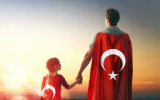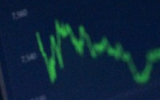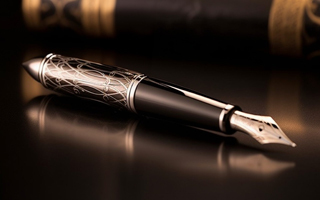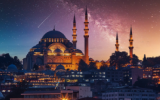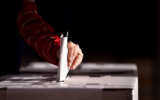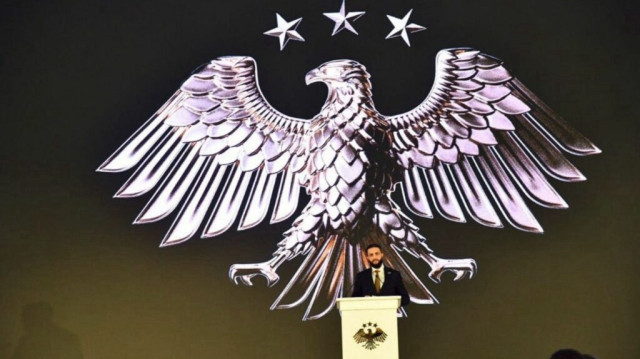
Golden eagle replaces previous symbol of hawk and is topped by 3 stars
The Syrian presidency unveiled the country's new national emblem Thursday during a ceremony at the Presidential Palace in Damascus, accompanied by nationwide celebrations in major city squares.
The announcement came as the country transitions from decades of Baath Party rule into a new political phase.
President Ahmed al-Sharaa described the new emblem as a reflection of “a united, indivisible Syria,” according to the state-run Syrian Arab News Agency (SANA).
“The identity we launch today reflects Syria's new historical phase,” al-Sharaa said during the event. “It draws inspiration from the golden eagle – symbolizing strength, determination, speed, precision and innovation.”
The golden eagle replaces the previous symbol of a hawk and is topped by three stars representing the people's liberation, as described by the Ministry of Information.
Its five tail feathers symbolize Syria's main geographical regions – the north, east, west, south and center – while its 14 wing feathers represent the country's 14 provinces, each said to tell “a story of resilience over 14 years of revolution.”
The adoption of the new identity will be followed by practical changes, including replacing national ID cards and passports to align with the updated design.
In a speech that blended symbolism with political messaging, al-Sharaa evoked Damascus's ancient history.
“A long time ago, a tale began in a city where the first humans are said to have lived. They multiplied, and with their growing numbers came the need to build disciplined behavior. They planted, created and built until they gave the world its first capital – Damascus."
“Whoever reviews history will find that Damascus is the beginning and end of the world's story and will realize that what we lived through under the previous regime was the most humiliating era in the history of the city,” he added.
Addressing the nation, al-Sharaa said “the story of Damascus continues through you. History will record that your downfall has ended, your revival has begun, your blood was not spilled in vain, your suffering was heard, your exile has ended, and your prisons have opened. Patience has delivered victory.”
He affirmed that “the new visual identity expresses the rebuilding of the Syrian individual and restores the Syrian identity shaped by emigration in search of security and a promising future. We are returning to it its confidence, dignity and natural place at home and abroad.”
Foreign Minister Asaad al-Shaibani also spoke at the ceremony, saying that in recent months, Syrian diplomacy has actively rejected the “deteriorated reality” inherited from the former regime.
“We've met world leaders who pledged to support Syrians in rebuilding their country. In every encounter, we carried a new face of Syria,” he said.
He emphasized a shift away from ideological slogans, aiming instead to restore Syria's global standing.
“We worked on messaging that portrays Syria's true image and preserves the dignity of its people. Our efforts brought Syria back to the international stage – not as a delayed hope, but as a present reality.”
Al-Shaibani said the nation is now defining its future on its own terms, not through others' perceptions.
“What we need today is a national spirit that reclaims the scattered pieces of our Syrian identity,” he said, adding that embracing Syria's diversity was “the starting point for building the future.”
He concluded by declaring the moment “a cultural death” for the former regime's legacy of “oppression and corruption masked by empty slogans.”
- Public celebrations across Syria
Festivities marking the launch of the new identity were held in public squares across Damascus and other major provinces.
In the capital, events took place in Umayyad Square, the Tomb of the Unknown Soldier and the Fairgrounds. Other celebrations were held in the Damascus countryside and in regional hubs including Sheikh Daher Square in Latakia, Saadallah al-Jabiri Square in Aleppo and Sabaa Bahrat square in Idlib and Deir ez-Zor. Hama's Assi Square and additional venues in western governorates also hosted public gatherings.
Mobile phone users earlier in the day received text messages from local telecom providers announcing the launch of the new national symbol, describing it as “a renewed emblem of determination and emancipation in the sky of freedom.”
Bashar al-Assad, Syria's leader for nearly 25 years, fled to Russia in December, ending the Baath Party regime, which had been in power since 1963.
A new transitional administration led by President Ahmed al-Sharaa was formed in Syria in January.

